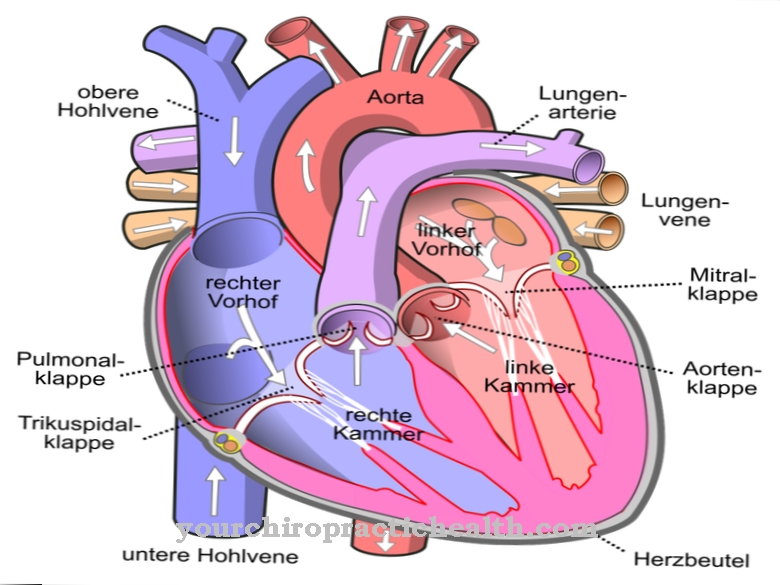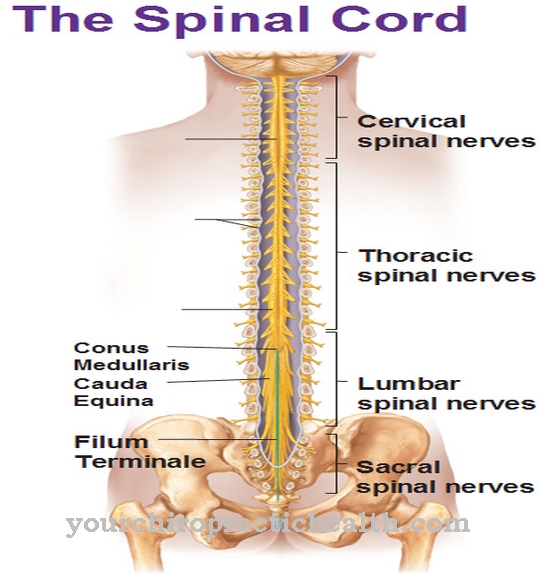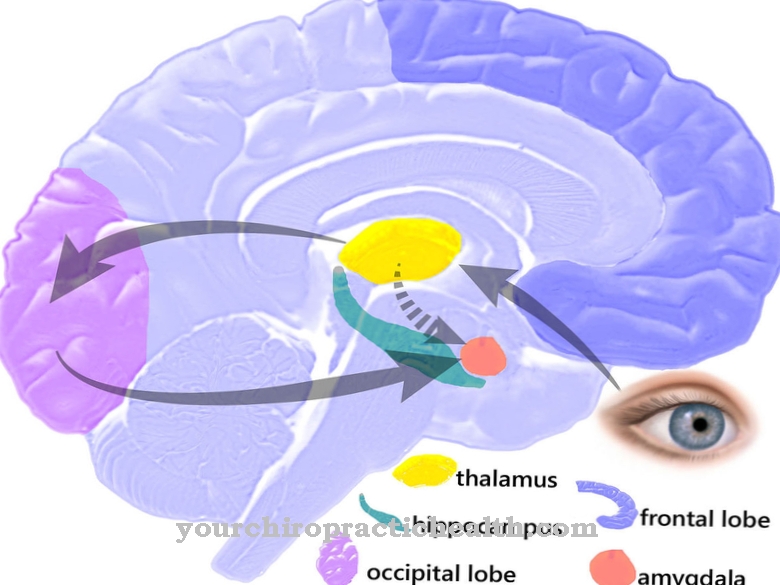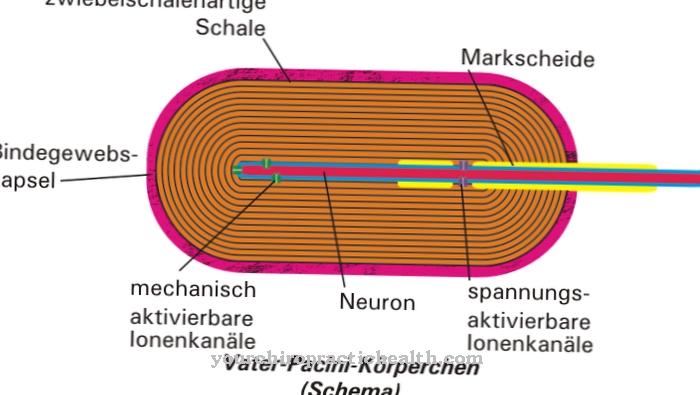As Facial nerve will the Facial nerve of man. It forms the 7th cranial nerve.
What is the facial nerve?
The facial nerve is also called the facial nerve, 7. cranial nerve, VII nerve or Intermediofacial nerve known. This is the 7th cranial nerve. What is meant is a branchial arch nerve that emerges from the nerves of the 2nd branchial arch. It is responsible for the visceromotor innervation of all muscles that develop from the muscular system of the gill arch.
Anatomy & structure
The facial nerve is the only cranial nerve in which sensory, parasympathetic, sensory and motor fibers are present at the same time. The nerve is made up of around 10,000 nerve cells. 7000 of these cells produce myelinated motor fibers. The remaining 3000 cells belong to the intermediate nerve. They have unmarked sensory, sensitive and parasympathetic fibers.
The motor components of the facial nerve primarily innervate the facial expressions and the rear sections of the floor of the mouth muscles. These are the stylohyoid muscle and the posterior ventor of the digastricus muscle. There are also fibers that lead towards the stapedius muscle. They serve for fine regulation of the hearing. Together with the chorda tympani (drum string), the sensory fibers of the facial nerve run over the nucleus tractus solitarii. In this way, the functional supply of the taste buds in the tongue papilla region is provided in the front section of the tongue.
The sensitive facial nerve fibers are located in the direction of the skin of the external acoustic meatus and the eardrum. There they transmit temperature sensations as well as touch and pain stimuli. Parasympathetic nerve fibers from the superior salivary nucleus are fed to the facial nerve via the intermedius nerve. With the chorda tympani they pull towards the oral cavity and take care of the innervation of the oral salivary glands. Further parasympathetic facial nerve components lead to the lacrimal gland, which is supplied by them.
The facial nerve has its main centers in the region of the medulla oblongata. After circling the abducens nucleus, the fibers of the facial nerve at the cerebellopontine angle leave the brain. Then the 7th cranial nerve reaches the temporal bone or its internal meatus acusticus via the internal porus acousticus. There it enters the canali nervi facialis at the fundus.
The geniculate ganglion is also formed on the temporal bone section. The perikarya of the afferent fibers can be found there. In addition, the facial nerve creates a second so-called “knee”, which is called the geniculum nervi facialis.
Three branches of the facial nerve form from the temporal bone. These are the major petrosal nerve, which innervates the lacrimal gland, the stapedius nerve, which supplies the stapedius muscle, and the timpani cord. Other branches such as the posterior auricular nerve emerge from the stylomastoid foramen.
Function & tasks
Different perceptions are transmitted through the facial nerve. These include sensations from the external auditory canal, the auricle and the tongue towards the brain. Furthermore, the facial nerve controls the facial muscles, the saliva, tears and nasal glands, the tongue muscles and a middle ear muscle.
The facial nerve is classified as a mixed nerve because it has both efferent and afferent nerve fibers. From the efferent fibers, commands from the brain are passed on to the affected organ of success. This can be a muscle, for example. The afferent fibers, on the other hand, pass on information from the success organ to the brain. These include, for example, the skin's temperature sensations.
You can find your medication here
➔ Medicines against memory disorders and forgetfulnessDiseases
Different diseases can affect the facial nerve. This primarily includes facial palsy (facial paralysis). This results in paralysis of some or all of the muscles of the facial nerve on one side of the head. In most cases, the causes of facial paralysis are circulatory disorders of the facial nerve within the bony canal, inflammation of the ear or narrowing of the space in the temporal bone region.
Typical symptoms of facial paralysis include drooping of the lower eyelid, incomplete closure of the eyelid, and increased hearing. In addition, the patient can not frown and suffers from disorders of tear secretion and taste disorders. Another disease of the facial nerve is facial myokymia. These are wave-like contractions along the muscle that occur involuntarily and do not end even during sleep. They are triggered by injuries to the central nuclei of the facial nerve within the brain stem.
Inflammation of the facial nerve, which occurs in the geniculate ganglion, can also cause impairments. The geniculate ganglion is a nerve switching center located on the course of the facial nerve close to the brain stem. The inflammation marks a special form of facial nerve palsy and mostly includes all nerve functions. Only the eyebrows can still be raised.
Facial spasm (tonic facial spasm) is also one of the diseases of the facial nerve. What is meant are tonic, synchronous cramps in all muscles that are supplied by the facial nerve. The most common reason for this is nerve compression in the immediate vicinity of the brain stem, which is caused by a vein, artery or vascular malformation. Multiple sclerosis or a tumor can also be responsible for the compression.
Another impairment of the facial nerve is the Melkersson-Rosenthal syndrome, the causes of which are not known. This is a mixture of facial paralysis, swelling of the oral mucosa and face, and pain in the outer ear region.



























